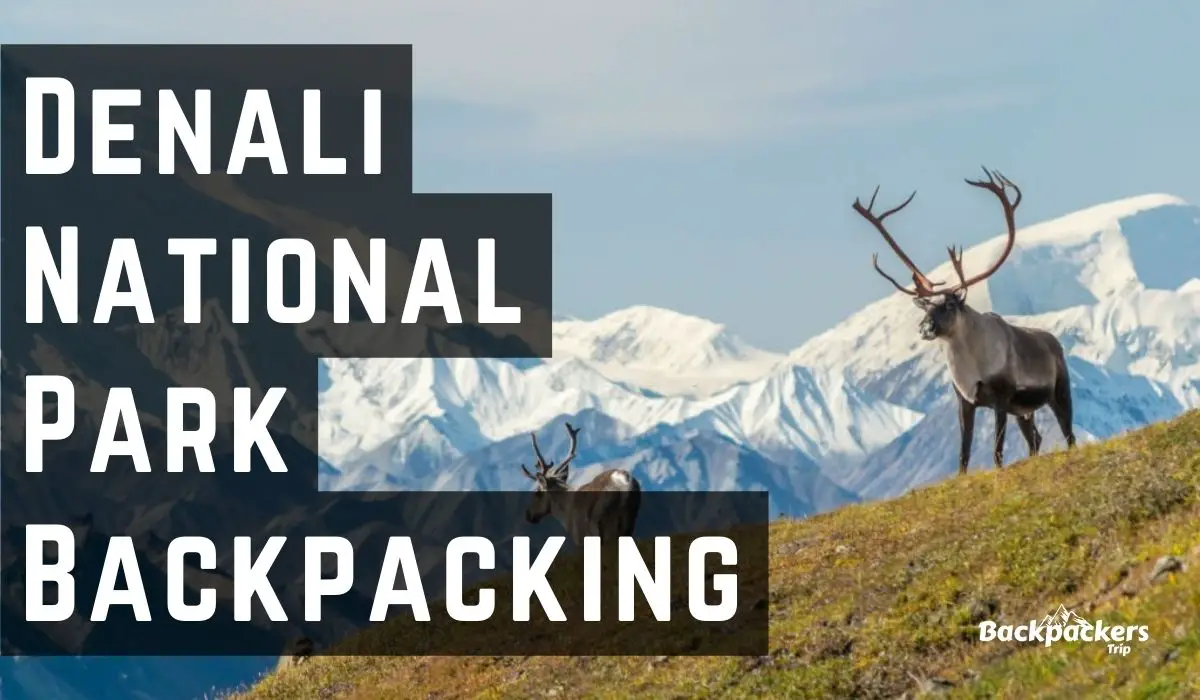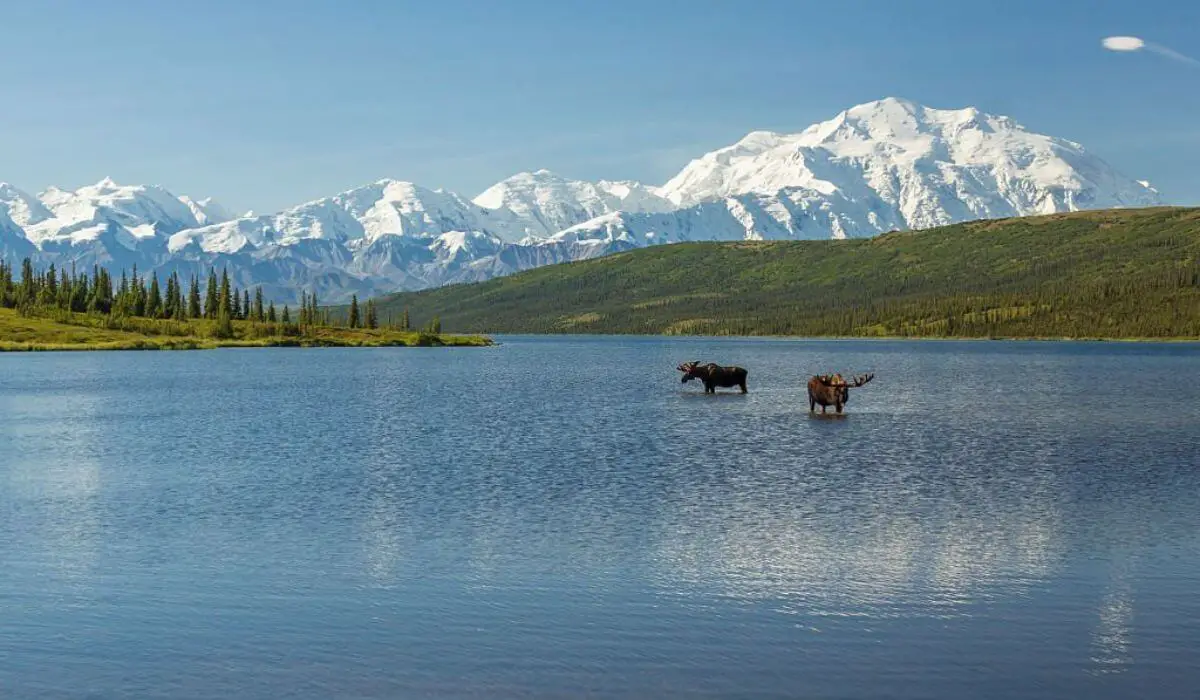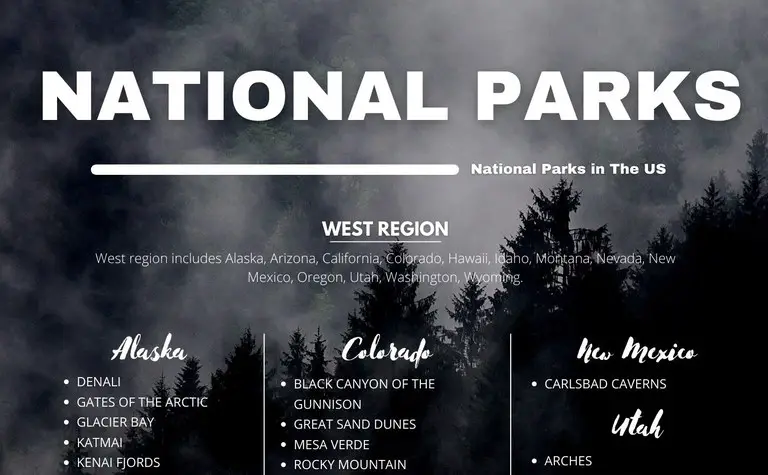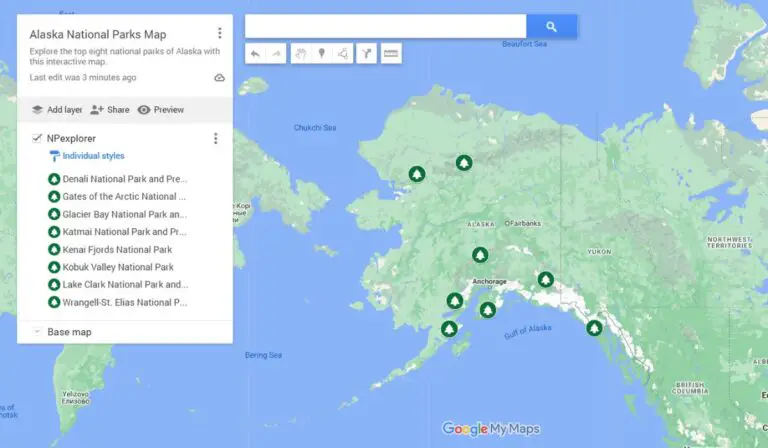Denali National Park Backpacking – Things You Must Know Before Heading Out

Denali National Park is located in Alaska. It owns a diverse and enriched heritage. It was named after the top peak of the park, Denali. The park is renowned for its lush forests, picturesque landscapes, mountains like ‘The Tundra,’ grizzly bears, and many other wildlife and scenic beauty.
Denali is often considered a remarkable spot for hiking and overnight backpacking. It has both familiar and backcountry trails, allowing you to choose whatever you like, be it adventurous backpacking or pleasurable hiking.
Backpacking in Denali National Park grants you an outdoor recreation of exploring amid wildlife and the exquisite beauty of Alaska’s wilderness, forming an immersive connection between your soul and nature.
Arrangements for Backpacking in Denali National Park
Before starting your journey, make sure you have the proper arrangements. Here is a basic rundown of a list you can consider as preparation-
Permits and reservations
You need a free permit while backpacking in Denali National Park. There is no reservation system. You have to collect it physically on the spot. A day hike can be done without a permit.
Collecting permits
From mid-May to late September, you must collect the entry pass from the backcountry information center on the Denali bus depot campus. During fall and winter, it can be collected from the visitor center.
Trail information
You must attend an orientation program if you want to go backcountry backpacking. As the park has familiar and unfamiliar trails, try to fix your tracks first. The Denali Guidebook by Ike Waits can be your leading resource here. Try to highlight the path you’re choosing to backpack on.
Pack essential gear and food. Choose your trails and hours according to your fitness.
It will be a privilege for you if you are aware of the bus routes and schedule beforehand.
Navigating Denali National Park
Off-trail backpacking and getting lost in the midst of Alaskan charm is what makes Denali National Park different from other parks. The specialty here is to achieve self-reliance by remote trekking and backcountry hiking. The park rangers work their level best to make your journey delightful and pleasant. But you’re the king of your path. The more you plan and invest, the better outcome you’ll have.
The primary convenience of choosing Denali National Park is that even if you’re off to remote hiking, the routes are spacious, and the surrounding alluring landscapes are widely viewed for miles. It makes it easily accessible and gives you a fantastic sightseeing experience all together. Additionally, the elaborated map makes your navigation much more effortless.
The magnet part of the park consists of Denali Peak, Mount Tundra, boreal forests, numerous water bodies crisscrossing the trails, alpine, freely roaming bears, and remote but accessible wilderness exploration.

Well-known Trails of Denali National Park
Although it is more of a self-supported cross-country backpacking zone, to your convenience, we present you a short list of well-known trails of Denali National Park.
Mount Healy Overlook Trail
It is a short trail but provides a splendor view of the Nenana River Valley and the Alaska Range. It is about 1700 feet elevated from the ground and eventually matches the alpine heights. Rising through the forest, at the halfway point, you will see some benches with a nice overlook. Then, the climb becomes steeper, and you will encounter switchbacks as you move forward. The trail’s official end is not Mount Healy’s peak, but it provides you with an open spot with great views to the south. You can further hike to the ridges of Mount Healy, although it can be dangerous.
Triple Lakes Trail
Triple Lakes trail is the longest trail in Denali. As the name sounds, it actually carries you along three captivating lake shores. You can have sightseeing, wildlife viewing, fishing, and a fantastic camp setting experience here. This takes backpackers almost through 10 miles of pathways.
The trail gradually rises in elevation from the north, allowing you to get excellent views of Riley Creek along with various unnamed mountains. It bends southeast around its mid-way point, overlooking the first of the three “Triple Lakes.” The official ending of this trail is at a small parking lot on the west side of Highway 3, showcasing the Nenana River from the McKinley Village Lodge.
Kesugi Ridge Trail
It is a long trail with Denali‘s idyllic view. You can see Kesugi Ridge, Mount Tundra, and grizzly bears from here. It is an ideal backpacking trail for adventure-loving backpackers. The K’esugi Ridge trail system offers many starting and ending points. Among all those, the northernmost trailhead, Little Coal Creek, ending at the Byers Lake Campground, is the most popular. It is generally considered a challenging route for a few boulder crossings, steep ascents and descents, and many bog crossings. Yet It will blow your mind with spectacular views, fresh blueberries, and plenty of water accessible for filtering as a bonus.
Igloo Canyon Trail
This is a topographically complex unit. Igloo Canyon Trail has many ridge systems, drainages, and passes with a mixture of hills, river valleys, and mountains. This is a land of many colors and textures, providing a stunning sight of towering cliffs, cascading waterfalls, and the glowing tundra. Sightseeing, wildlife viewing, and bird-preying can be your top attraction here. One of the most popular hikes is to the top of Sable Mountain from Igloo Canyon. Overall, it is an excellent place for making loop hikes and getting views of the Alaska Range from high ridges.
The Eielson Alpine Trail
It is a mediocre-level strenuous trail for backpackers. The steep mountains here allow you a view of panoramic vistas of the surrounding mountains, valleys, and glaciers. You’ll catch up to the alpine tundra ecosystem as the trail goes. Rocky terrain and vibrant wildflowers during summer and spring are really worth visiting. This trail is renowned among hikers and visitors for its incredible 360° views. So the condition can be stated as well maintained, no shade, rocky, and fabulous!
Backcountry Backpacking in Denali National Park
The key attraction of the park is backcountry backpacking. You will create your own track with the help of the Denali Guidebook and Denali Trails Illustrated Map. To your ease, we shorted down a list of popular backcountry trails of Denali National Park.
Teklanika River Trail
This is a classic backpacking route. One can reach this in many different ways. The highlights of this place include views of the Alaska Range, Refuge Valley, and a remote backpacking experience. This should be trailed by advanced backpackers who have excellent navigation skills.
Difficulty: Moderate to Strenuous
Sanctuary River Trail
This, too, follows the rules of Teklanika river trails. You’ll have to be skilled to backpack here. Try a day hiking before you are up for an overnight backpacking here to get a grip on the tracks and surroundings.
Difficulty: Moderate to Strenuous
Toklat River Trail
It is more of a beginner-friendly trail. It follows a river valley upstream to its terminal at a glacier. The highlights include a diversion from daily life, birdseeing, and sightseeing.
Difficulty: Easy
Eielson Loop
Eielson Loop offers you both mild and wild remote backpacking experiences. You can have mind blowing views of the total Denali in this loop.
Difficulty: Easy to Moderate
Wonder Lake
It is a one-way trail for backpackers renowned for amazing photogenic views. So, if you are into backpacking as well as photography, this might be a better fit for you.
Former Activities of Backpacking
There is an entrance fee year-round for all above 15. Interagency Passes are accepted. You’ll also have to pay for the bus ticket.
You’ll be shown a video on safety measures and guidelines as soon as you pay the entrance fee. The rangers will give you a quick verbal brief again for affirmation.
You’ve to get a bus ticket then as the park goes for 92 miles and personal vehicles are allowed for 15 miles only. The bus ticket is of two types. One is for day hikers and another for backpackers. The one for backpackers, has an additional overnight staying permit.
The bus for backpackers is called a ‘camper bus,’ which departs 3 or 4 times daily.
You have to carry bear-resistant cans provided by the authority as an act of safety measure.
Safety Measures of Backpacking in Denali National Park
Know your route
Know your route precisely before heading out. A good guide on maps and tracks will save you time and allow you to navigate easily.
‘Leave No Trace’ principle.
Keep your surroundings the same as you found it, making the world a better animal habitat. Carry your specks of dirt and try not to leave any trace behind when you leave the place.
Altitude sickness
Before embarking on higher elevation, be aware of altitude sickness. Choose your trails according to your body fitness and flexibility.
Check the weather forecast beforehand.
As Alaska is a zone of rapidly changing weather, it will be convenient to check the forecast before starting. Choosing a convenient season is necessary, too. The rainy season often brings thunderstorms in this area. So make sure you are aware of the weather.
Follow park guidelines
Try to follow the guidelines and regulations pi to pi to avoid unwanted circumstances. Maintain a safe distance from wildlife and be kind to mother nature.
Conclusion
To summarize, Denali national park is famous for its enchanting and stunning off-trail backpacking conditions. The park showcases the panoramic beauty of peaks, ground, and wetlands, bringing you all in one packaged deal. Meeting every bit of your expectations, it holds a variety of options open for you to choose from. So you should be adding backpacking in Denali National Park to your bucket list right away if you are an enthusiastic backpacker.



